If you’re new to music production, you might be wondering what equipment you need to start creating your own tracks. The truth is, having the right equipment is crucial to producing high-quality music that can stand out from the rest. Whether you’re a singer-songwriter looking to record demos or a beginner music producer interested in creating electronic dance music, having the right gear can make all the difference.
In this article, we’ll discuss the essential equipment you’ll need to start producing music. We’ll cover everything from computers and digital audio workstations (DAWs) to audio interfaces, studio monitors, and MIDI controllers. Furthermore, we’ll outline extra equipment that can take your productions to the next level.
Without further ado, let’s get started!

Essential Equipment For Music Production
When it comes to producing music, there are several essential pieces of equipment that you simply cannot do without. Here are the must-have items you’ll need to get started:
1. Computer/Laptop
The first thing you’ll need is a computer. Your computer is the heart of your music production setup, and it’s where you’ll run your digital audio workstation (DAW), the software that allows you to record, edit, and mix your music. When choosing a computer, you’ll want to look for something with a fast processor, plenty of RAM, and a decent-sized hard drive to store your music files.
Laptops are a popular choice for music production since they’re portable and allow you to work from anywhere. However, desktop computers tend to be more powerful and easier to upgrade, making them a better choice if you plan to do more advanced music production.
For further information on the best computers for music production, check out our blog post titled “Best Computers For Music Production“.
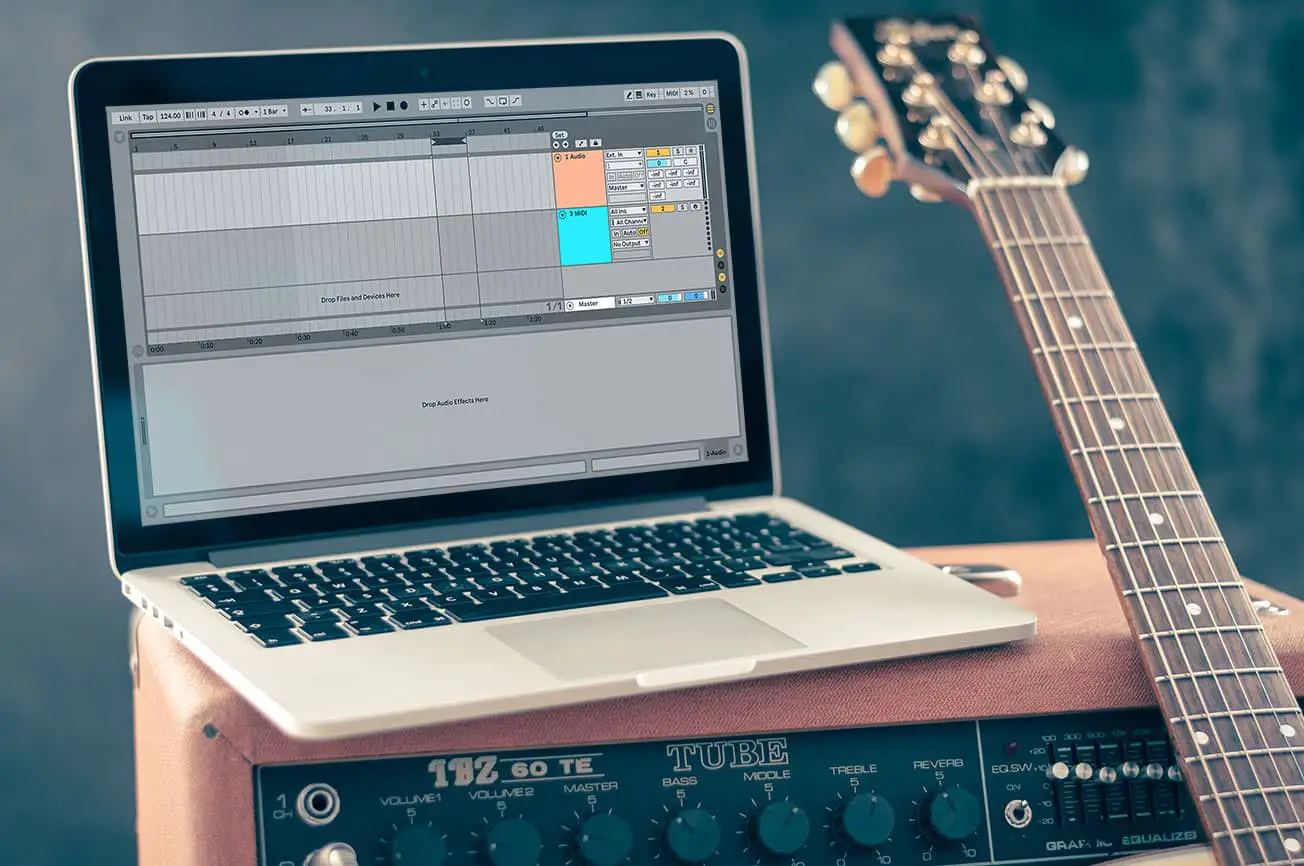
2. Digital Audio Workstation (DAW)
A digital audio workstation, or DAW, is a software application that allows you to create and manipulate digital audio. Your DAW is where you’ll record and edit your music, add effects and plugins, and mix and master your tracks.
A typical DAW includes features such as a multitrack recording interface, a mixer for adjusting levels and panning, effects processing tools, and virtual instruments. You can use a DAW to record live instruments and vocals, MIDI performances, or even to create music entirely from scratch using virtual instruments and loops.
There are several different DAWs available, each with its own set of features and workflow. Choosing the right DAW will depend on your personal preferences, the type of music you want to produce and your budget. Some popular DAWs include:
- Ableton Live
- Logic Pro X
- Pro Tools
- FL Studio
- Cubase
- GarageBand (free with Mac computers)
If you would like to read more about and compare the most popular DAWs on the market, make sure to visit our previous post titled “Best Music Production Software | Top 5 DAWS“.

3. Audio Interface
An audio interface is a piece of hardware that connects microphones and instruments to a computer, allowing producers to record audio directly into a digital audio workstation (DAW). At the same time, an audio interface makes it possible for a computer to output audio to a pair of studio monitors.
An audio interface allows musicians to record audio with professional-level quality without having to buy expensive equipment or hire a studio engineer. They also make it possible for users to record multiple tracks at once, rather than having to record one instrument at a time. Audio interfaces work by converting the analog signals produced by a microphone or instrument into a digital format that a computer can understand.
When choosing an audio interface, you’ll want to consider the number and type of inputs and outputs, the quality of the preamps, the connectivity options, and the overall compatibility with your computer and software. Some popular audio interfaces include:
- Focusrite Scarlett 2i2
- Universal Audio Apollo Twin
- PreSonus Studio 24c
- Behringer U-Phoria UMC204HD
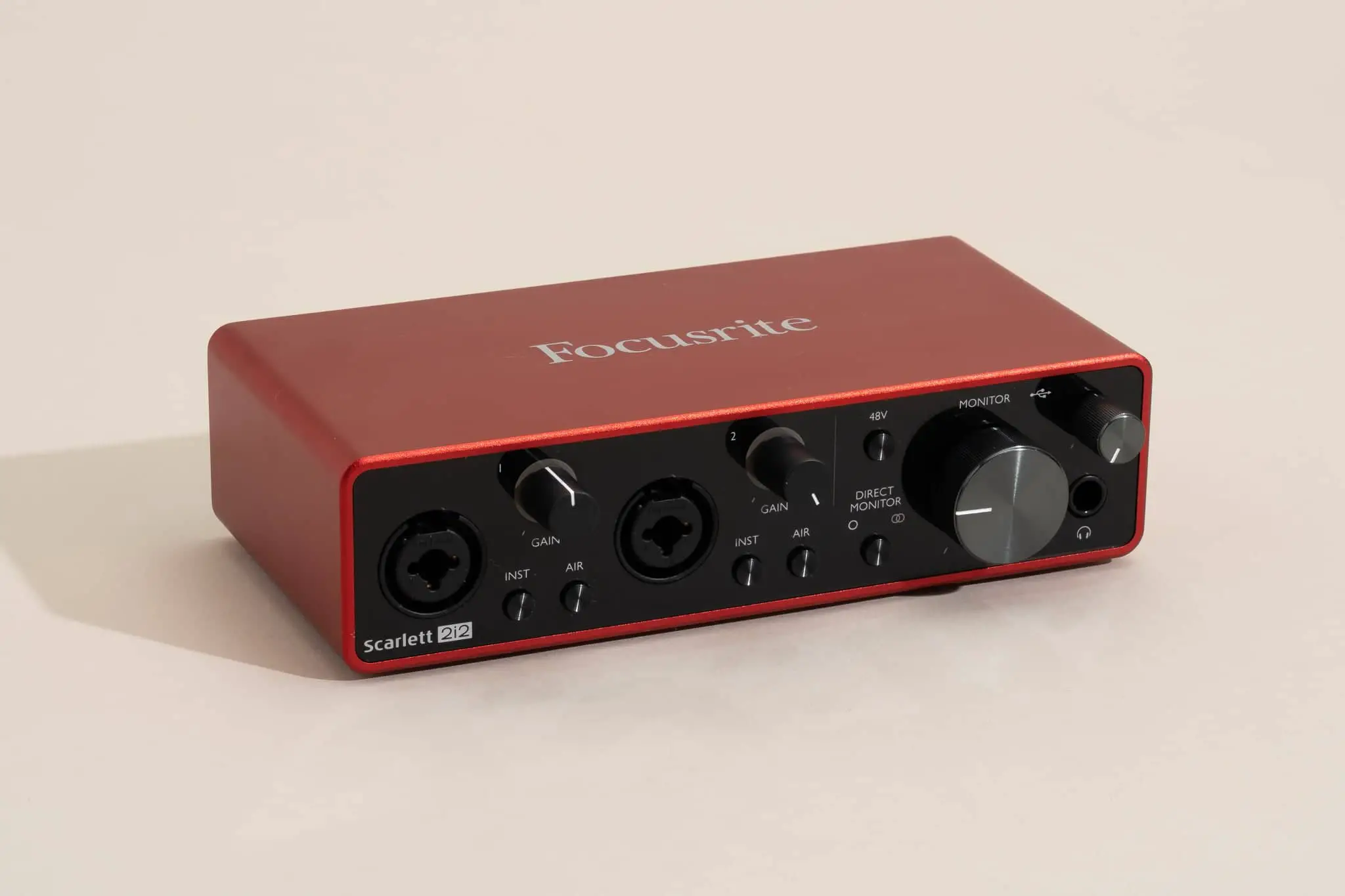
4. Studio Monitors/Headphones
Studio monitors or headphones are essential for accurately monitoring your music. They allow you to hear the details and nuances of your mix, which is crucial for getting a professional sound. Studio monitors are speakers designed specifically for music production, while headphones are an alternative for those who don’t have a dedicated room for their music production setup.
Unlike consumer speakers, studio monitors are designed to provide a flat frequency response, which means they don’t color or enhance the sound in any way. This allows producers to hear their music as it truly sounds, without any added bass, treble, or other effects that can be misleading.
Using studio monitors also helps ensure that the mix will translate well to other playback systems, such as consumer speakers or car audio systems. If the mix sounds good on studio monitors, it’s more likely to sound good on a variety of other systems as well. Some popular studio monitors include:
- KRK Rokit
- Yamaha HS series
- JBL LSR series
- Adam Audio A7X
- Presonus Eris series
Some popular headphones for music production include:
- Sennheiser HD 650
- Audio-Technica ATH-M50x
- Beyerdynamic DT 770 Pro
- Sony MDR-7506
- AKG K701
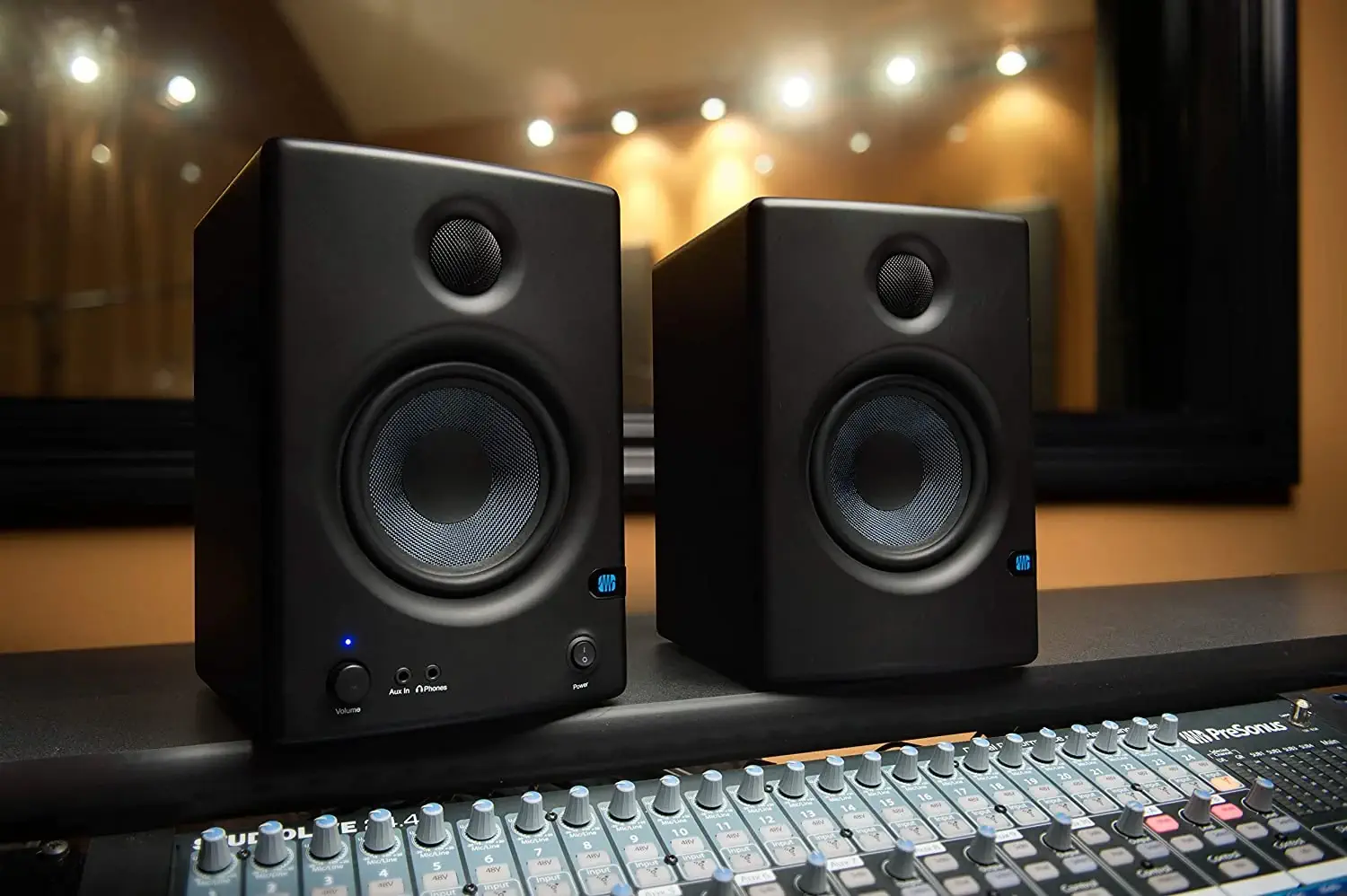
5. MIDI Controller
A MIDI controller provides a physical interface for controlling and manipulating virtual instruments and other software-based music tools. It typically has keys or pads that you can use to trigger notes, as well as knobs and faders for controlling parameters like volume and effects.
MIDI controllers help music producers streamline their workflow, improve the quality and authenticity of their performances, and experiment with new sounds and techniques.
When choosing a MIDI controller, you’ll want to consider the number of keys or pads, the size and weight, and the compatibility with your software and setup.
- Akai MPK Mini Mk
- Novation Launchkey
- Native Instruments Komplete Kontrol
- Akai Professional MPK Mini
- Arturia KeyLab Essential
- M-Audio Oxygen
Be sure to check out our previous guide titled “Top 10 Mini MIDI Keyboards” for a comprehensive overview of the best mini MIDI keyboards available.
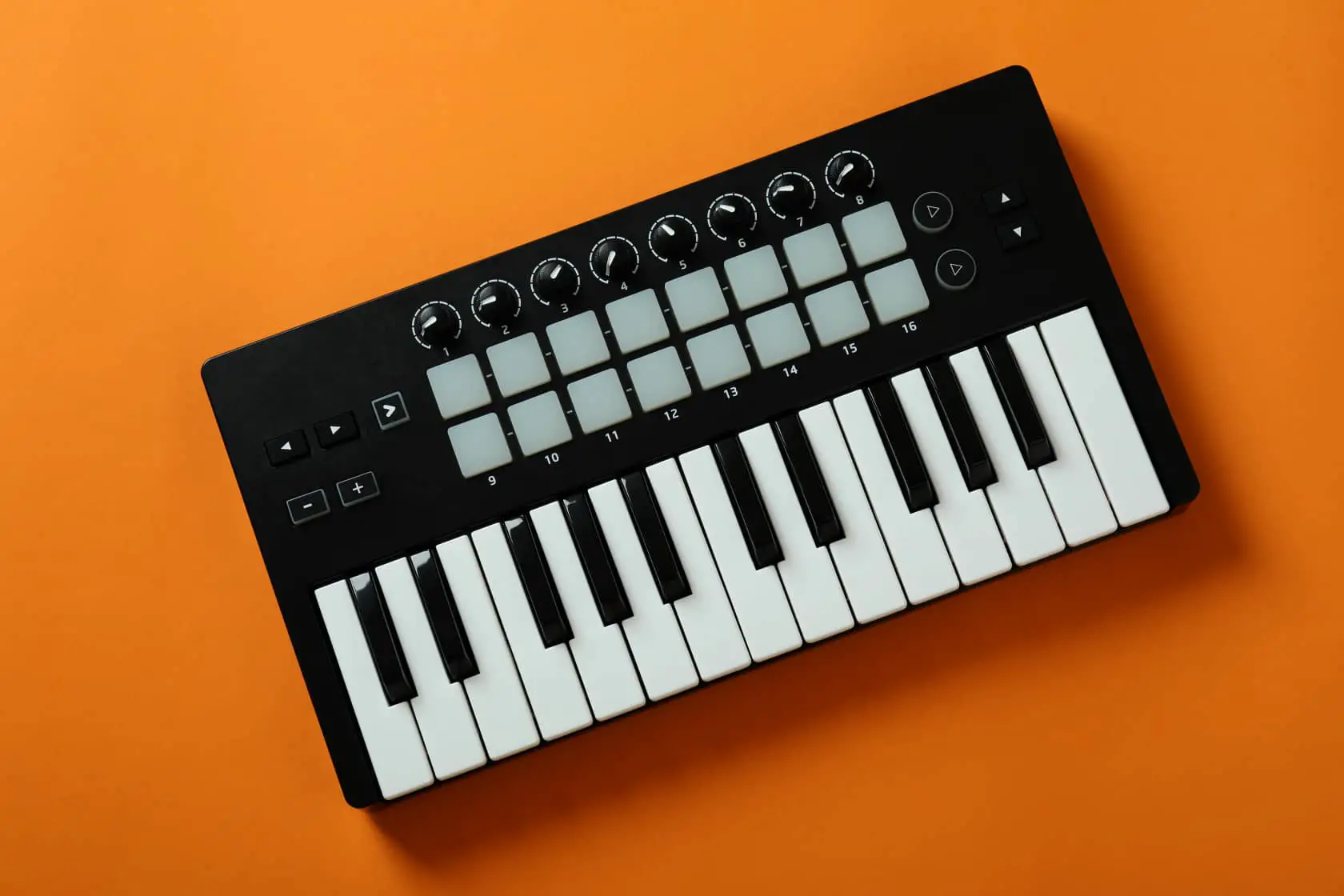
6. Microphone
A microphone is essential if you plan to record vocals or acoustic instruments like guitar or drums. A good microphone can capture the nuances and subtleties of your performance and give your recordings a professional sound. There are several different types of microphones available, each with its own strengths and weaknesses.
When choosing a microphone, you’ll want to consider the type of microphone, the polar pattern, and the frequency response. You’ll also need to choose between a dynamic or condenser microphone, each of which has its own advantages and disadvantages. Some popular microphones include:
- Shure SM7B
- Audio-Technica AT4053b
- AKG Pro Audio C214
- Rode NT1-A

7. Cables & Accessories
Finally, you’ll need a few cables and accessories to connect all your gear together. You’ll need XLR/1/4″ cables to connect your microphone or instrument to your audio interface, as well as cables to connect your audio interface to your monitors or headphones.
Other useful accessories to consider include a pop filter to reduce plosives and sibilance in vocal recordings, a sturdy microphone stand, acoustic treatment (soundproofing), studio monitor stands etc.

Optional Equipment For Music Production
While the essential equipment we’ve discussed so far is necessary to get started with music production, there are several optional items that can take your productions to the next level. Here are a few examples:
1. External Hard Drive
An external hard drive can be a great investment if you plan to produce a lot of music. It allows you to store your music files separately from your computer’s internal drive, which can free up space and make your computer run faster. It also provides an additional layer of backup in case something happens to your computer.
Moreover, using an external hard drive ensures that your music files are portable, allowing you to easily transfer them between different computers or bring them with you on the go, making collaboration with other musicians or producers more convenient.

2. Analog Synthesizer
If you’re interested in creating electronic music, an analog synthesizer can be a great addition to your setup. It allows you to create unique sounds and textures that can’t be replicated with virtual instruments.
Analog synthesizers offer a hands-on approach to sound design, allowing you to manipulate the sound in real-time using knobs and sliders, giving you more control over the final product and allowing for more spontaneous creativity during the production process.
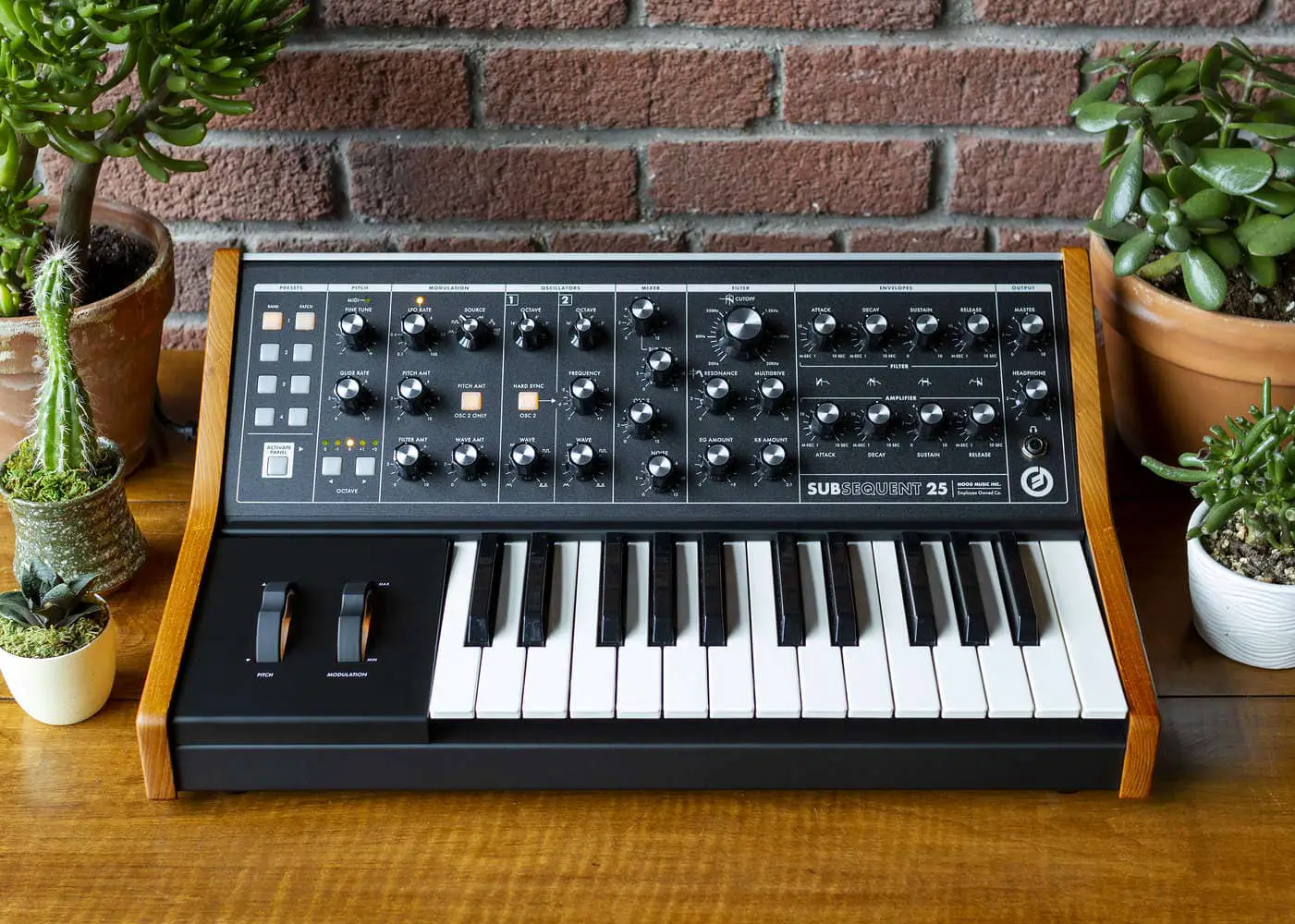
3. Subwoofer
A studio subwoofer can help you better monitor the low end of your mix, which is often the trickiest part to get right. It can also provide a more immersive listening experience for your music.
Subwoofers can help you identify issues with the low end of your mix that might not be audible on smaller studio monitors, allowing you to make more informed mixing decisions and ensure your music translates well to a variety of playback systems.
Additionally, a properly calibrated subwoofer can provide a more accurate representation of the music, helping you achieve a more polished and professional final product.

Conclusion
So there you have it, the essential equipment you need to start producing music, as well as some optional items that can take your productions to the next level.
While investing in high-quality gear is important, it’s also important to remember that the most important aspect of music production is your creativity and talent. With the right equipment and a willingness to learn and experiment, you can create music that truly represents your unique vision and voice.
Related Posts:
Do You Need To Know Music Theory To Produce Music?
Top 6 Studio Monitor Stands For Home Studios
10 Tips For Producing Your First Hit Song
Want To Know More?
Here at Live Aspects, we have dozens of useful lessons and tutorials created to enhance your music production skills and help speed up the learning process. You can access our huge range of music theory lessons and production tips and tricks here.